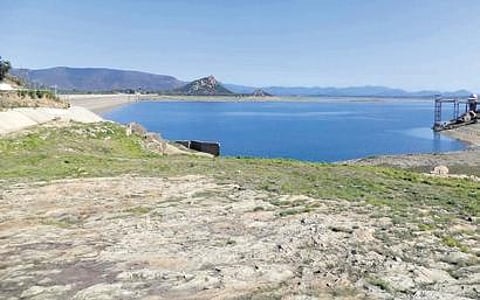

BENGALURU: Researchers and scientists at the Indian Institute of Science (IISc) have raised an alarm over the “grim situation” in the Cauvery basin in Karnataka and Tamil Nadu. According to them, green cover in the basin of both states has decreased drastically and the area under cultivation has increased. Because of this, the demand for water has increased in the two states.
In their report, ‘Cauvery River: Land Use Dynamics Biodiversity and Hydrological Status’, released on Tuesday, they explained about the decline in forest cover and increase in demand for water between 1965 and 2016. From 2016 till date, there has been a 2% increase in agricultural area and decrease in forest cover every year in both states. This led to the increase in demand for water, Prof TV Ramachandra, co-author of the report, told TNIE.
The final report will be released within three months. However, preliminary analysis indicated that agricultural activities in the catchment areas of the Cauvery have increased. Moreover, lakes have not been desilted in both states. Because of this, their water-holding capacity has reduced, leading to a grim situation. Had the authorities desilted the lakes on a timely basis, their water-holding capacity would have increased, he said.
The natural vegetation cover reduced from 28194 sqkm to 15345 sqkm, indicating a 45.55% loss of forest cover in the last five decades. Karnataka lost 57% (9664 sqkm) and Tamil Nadu 29% (2905 sqkm). Kerala lost 27% (279 sqkm) of natural vegetation cover during the period.
‘Catchment areas saw rise in agri activities’
The report stated that the catchment areas witnessed a drastic increase in agriculture and allied activities. In Tamil Nadu, the area under irrigation increased from 6556 sqkm (13.8%) to 20233 sqkm (42.7%) till this decade. In Karnataka’s, the area under irrigation also increased from 1193 sqkm (3.42%) to 8497 sqkm (24.3%).
The demand for water also increased over the years. In Tamil Nadu, it increased from 429 tmcft to 573 tmcft and in Karnataka, from 72 tmcft to 171 tmcft till 1971.
The report stated that there has been no change in vegetation in Pushpagiri Wildlife Sanctuary. But the anthropogenic pressure due to commercial crops has transformed major forests in buffer regions. Similar is the case with Talacauvery Wildlife Sanctuary. Brahmagiri Wildlife Sanctuary saw a reduction in evergreen forest cover from 93.33% to 87.66%.
Bandipur and Nagarahole Tiger reserves saw a decline of 15.19% and 11% of forest cover, respectively, with buffer areas recording an increase in horticulture activities and human habitation. BRT Tiger Reserve saw a decline in evergreen and deciduous forest cover and an increase in scrub forests.